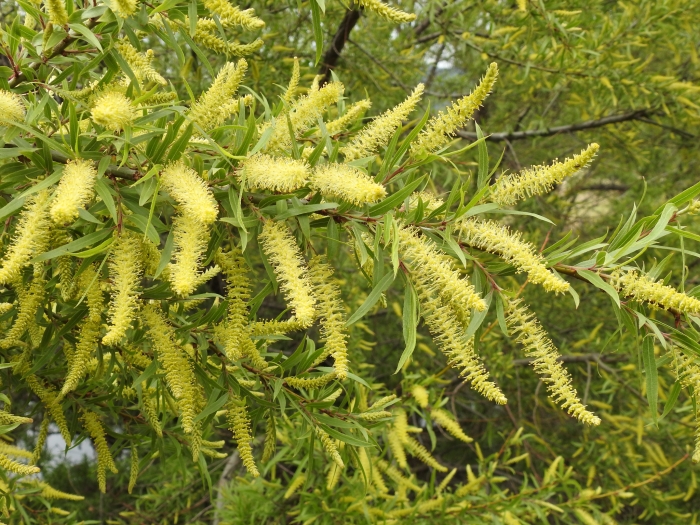Humboldt’s Willow
(Salix humboldtiana)
Humboldt’s Willow (Salix humboldtiana)
/
/

Alfonso Benítez-Mora
CC BY 4.0
Image By:
Alfonso Benítez-Mora
Recorded By:
Copyright:
CC BY 4.0
Copyright Notice:
Photo by: Alfonso Benítez-Mora | License Type: CC BY 4.0 | License URL: http://creativecommons.org/licenses/by/4.0/ | Rights Holder: Alfonso Benítez-Mora | Publisher: iNaturalist | Date Created: 2021-10-08T13:32:51-07:00 |

























Estimated Native Range
Summary
Salix humboldtiana, commonly known as Humboldt’s Willow, is a deciduous tree primarily native to riparian areas, such as riverbanks and wetlands, throughout Central and South America, from Mexico to southern Chile and Argentina. It typically grows to a height of up to 82 feet (25 meters) with a broad, open crown. The leaves are narrow, lanceolate, and have a slightly serrated margin, while the bark is deeply furrowed, providing textural interest. In spring, it produces catkins up to 4 inches long, which are yellowish-green and not particularly showy. The tree is an important component of its native riparian ecosystems, offering habitat and food for a variety of wildlife.
Humboldt’s Willow is valued for its rapid growth and adaptability to a range of climates and elevations, making it useful for erosion control and riparian restoration projects. It thrives in full sun to partial shade and prefers moist to wet soil conditions, reflecting its natural affinity for watercourses. While it is not commonly used in ornamental horticulture, it serves an ecological role in naturalized plantings and wildlife gardens. Gardeners should be aware that, like many willows, it can have aggressive roots that may interfere with underground utilities or structures. It is also susceptible to pests and diseases common to willows, such as willow scab and borers.CC BY-SA 4.0
Humboldt’s Willow is valued for its rapid growth and adaptability to a range of climates and elevations, making it useful for erosion control and riparian restoration projects. It thrives in full sun to partial shade and prefers moist to wet soil conditions, reflecting its natural affinity for watercourses. While it is not commonly used in ornamental horticulture, it serves an ecological role in naturalized plantings and wildlife gardens. Gardeners should be aware that, like many willows, it can have aggressive roots that may interfere with underground utilities or structures. It is also susceptible to pests and diseases common to willows, such as willow scab and borers.CC BY-SA 4.0
Plant Description
- Plant Type: Shrub, Tree
- Height: 16-49 feet
- Width: 15-30 feet
- Growth Rate: Rapid
- Flower Color: N/A
- Flowering Season: Spring
- Leaf Retention: Deciduous
Growth Requirements
- Sun: Full Sun, Part Shade
- Water: High
- Drainage: Medium, Slow, Standing
Common Uses
Bank Stabilization, Bee Garden, Bird Garden, Erosion Control, Water Garden
Natural Habitat
Native to riparian areas, such as riverbanks and wetlands, throughout Central and South America
Other Names
Common Names: Humboldt Willow, Sauce Amargo, Sauce, Sauce Chileno, Saule Peuplier, Pacific Willow
Scientific Names: , Salix humboldtiana, Pleiarina humboldtiana, Salix chilensis, Salix chilensis var. crispa, Salix chilensis var. crispa, Salix falcata, Salix humboldtiana f. fastigiata, Salix humboldtiana var. falcata, Salix humboldtiana var. fastigiata
GBIF Accepted Name: